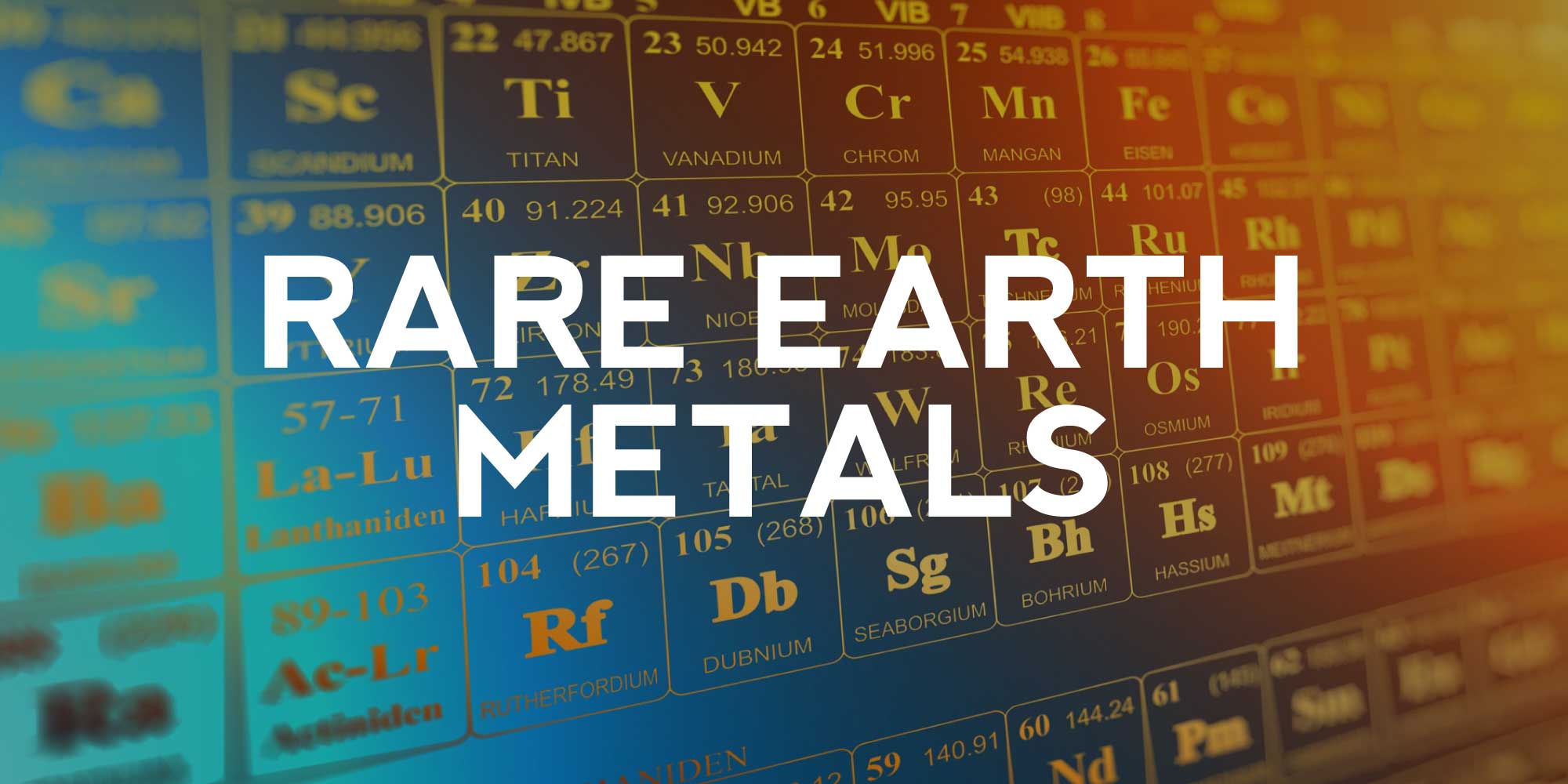Rare earth elements (REE) are key parts of modern manufacturing. Even though they’re invisible to most end consumers, they’re indispensable metals in electronics manufacturing.
Like other minerals, rare earth metals have a limited supply. But despite being called rare, they’re more abundant than gold. Thulium, the rarest REE, is 125 times more prevalent than gold. While cerium, the most prolific REE, is just as abundant as copper.
However, these metals are rare because you can’t find them in high concentrations in the earth’s crust. Plus, their geochemical properties make it hard to separate them and obtain pure metal. As a result, they cost more to produce.
Types of Rare Earth Metals
Rare earth elements comprise 15 lanthanides found in the middle of the periodic table, with atomic numbers 57 to 71. Scandium and yttrium of atomic numbers 21 and 39 respectively are also grouped as REEs. That’s because they come from the same ore bodies and exhibit similar chemical properties. So in total, there are 17 rare earth elements.
The 17 rare earth elements fall into two categories based on their atomic numbers; light and heavy. That said, scandium doesn’t fall into any of those categories. REEs with lower atomic numbers are considered light. They include cerium, praseodymium, lanthanum, neodymium, europium, promethium, samarium, and gadolinium.
Heavy REEs have a higher atomic number. They include dysprosium, erbium, holmium, terbium, lutetium, ytterbium, thulium, and yttrium. The heavy REEs are less common than the light ones. Some are already experiencing supply shortages, making them more valuable than the light REEs.
Rare earth metals are used in multiple industries, including energy production, medical equipment, military defense systems, smartphones, computers, and electric vehicles.
Uses of Rare Earth Metals in Electronics
You can use rare earth metals in their pure form or in combination with other elements. In the light REEs category, neodymium has the highest number of uses. For one, you can use it on mobile phones, medical equipment, and electric cars. It’s the best rare metal for making permanent magnets.
Neodymium magnets are strong and highly useful when weight and space are limiting factors. They help make wind turbines and storage devices like CD/DVD and hard disk drives. Moreover, you can also use them in automotive systems like audio speakers, power steering, power seats, and electric windows.
Another crucial light REE is praseodymium. When used with magnesium alloys, it is a vital element in the making of aircraft engines. You can also use it for studio lighting in the film industry and for making permanent magnets.
Rare earth metals have luminescent properties, making them effective in producing fluorescent tubes and LED lights. REEs like yttrium, terbium, and europium can produce different colors in light bulbs, such as red, green, and blue. Due to their luminescent properties, these metals help make LCD screens, from smartphones to large television sets.
Lanthanum helps to make approximately half of all digital camera lenses, including those used in smartphones. Its alloys are a key component in the making of batteries for hybrid and electric cars.
Other applications of REEs include the making of microphones, headphones, lasers, satellites, radar, and sonar. Although using rare earth metals in electronics contributes a small part to the final product, the product can’t function without them.
Global Supply of Rare Earth Metals
Rare earth metals are available in various concentrations in many parts of the world. But the economic viability of mining them makes it hard for most countries to produce them. Currently, china has the highest reserves of REE globally. In 2020, China contributed 58.3% of the global supply of rare metals. And out of all REE imports by the U.S., 80% came from China.
Other countries with substantial REE reserves include Australia, Brazil, Russia, Vietnam, and India. But when it comes to the actual REE processing, the four leading countries are China (60.6%), the United States (15.5%), Myanmar (9.4%), and Australia (7.9%).
The Future of Rare Earth Metals
No doubt, the use of rare earth metals in electronics is crucial. They don’t have a close substitute. And their use in versatile industries makes them even more essential. When used in electric cars and wind turbines, they help promote clean energy.
Since the fight against global warming is intensifying, the world will experience a surge in electric cars. Manufacturers will need more of these metals. And the future demand may exceed supply.
That said, as the future demand increases, prices will go up, and other countries might see the economic worth of mining them. And once the reserves decrease, the best alternative will be reusing the metals in electronics that have reached the end of their useful lives.
About The Author
 Tony Zuberbuehler is a Sales Manager at Versa Electronics with a focus on electronic contract manufacturing. Tony’s career in technology manufacturing spans 25+ years and has included roles as an engineering liaison, in purchasing and material management, manufacturing and planning, customer interfaces, and product fulfillment. Connect with Tony Z on LinkedIn.
Tony Zuberbuehler is a Sales Manager at Versa Electronics with a focus on electronic contract manufacturing. Tony’s career in technology manufacturing spans 25+ years and has included roles as an engineering liaison, in purchasing and material management, manufacturing and planning, customer interfaces, and product fulfillment. Connect with Tony Z on LinkedIn.





